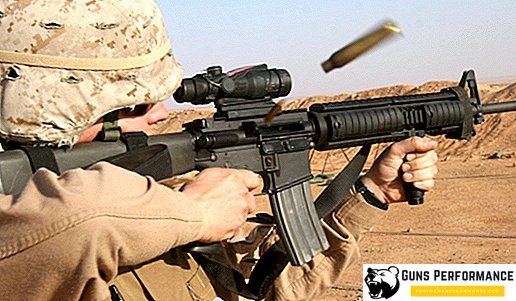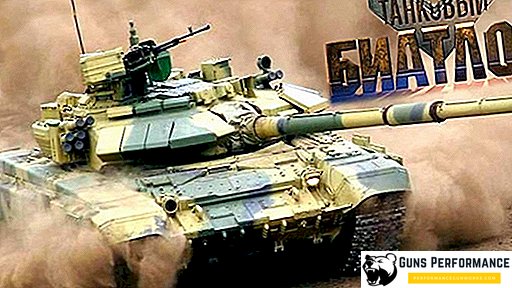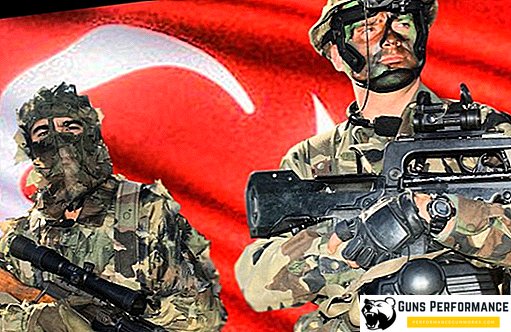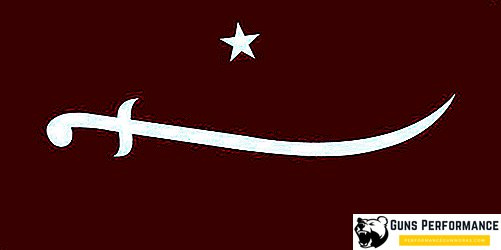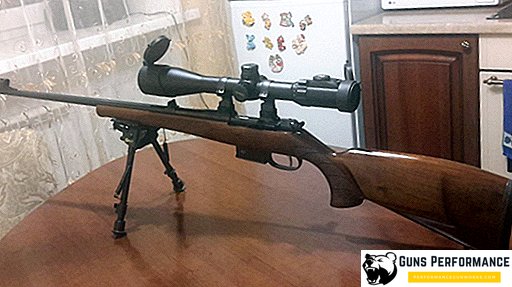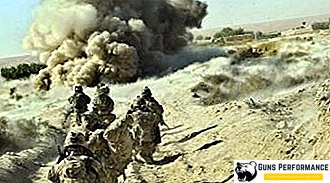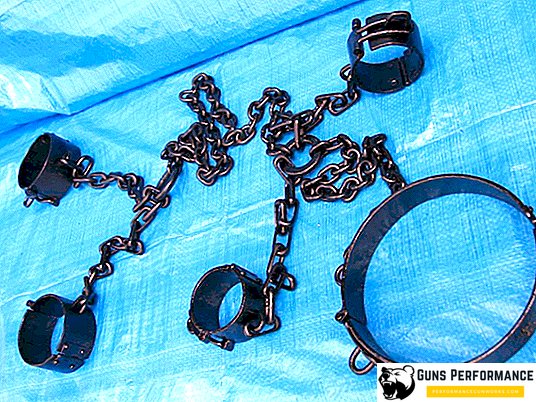
Pe-2 is a Soviet dive bomber of the Second World War period, created under the leadership of talented aircraft designer Vladimir Mikhailovich Petlyakov. This combat vehicle became the most massive dive bomber developed in the USSR. Pe-2 was put into service in 1940, its mass production continued until 1945, during this period more than 11 thousand cars were produced.
The Soviet Pe-2 bomber made a significant contribution to the victory over Nazi Germany. These dive bombers were used at the front from the very first days of the war, the Luftwaffe pilots considered the Pe-2 one of the best Soviet aircraft. The flight-technical characteristics of the vehicle made it possible to use it even under the conditions of complete domination of German fighters in the air. On the front, the Pe-2 was used as a bomber, fighter, and scout.
It is not known how the fate of the Pe-2 aircraft (and the whole of Soviet aviation) would have been in the future, if not for the tragic accident: in January 1942, Petlyakov died as a result of a plane crash. Disputes about its causes do not subside to this day.
The Pe-2 received the nickname “pawn” among the troops, and the attitude towards it was ambiguous. On the one hand, it was a modern combat aircraft with very “advanced” characteristics, but, on the other hand, the Pe-2 was rather difficult to control and did not forgive the pilot’s mistakes.
In addition to the air forces of the USSR, the Pe-2 was in service with the air forces of Poland, Yugoslavia and Czechoslovakia. The operation of this machine continued until 1954.

The history of the Pe-2
The problem of increasing the accuracy of bombing arose before military aviators already during the First World War. Increasing the speed of the aircraft and the imperfection of the sighting equipment led to an even greater deviation of the bombs from the required point. The way out of this situation was seen in the use of new bombing techniques. The most promising of them was considered to be bombing from a dive.
However, to create an effective dive bomber, it was necessary to solve a whole complex of rather complex technical problems.
Every time a plane goes out of a dive, it experiences significant overload. Therefore, the dive-bomber must have high strength characteristics. Such a plane was supposed to combine the carrying capacity of an average bomber with the maneuverability of a fighter.
In addition, the designers should think about reliable crew armor protection, since dive bombers operate at low altitudes and are vulnerable to fire from the ground. Also needed was an equipment for automatic withdrawal of the machine from the peak and brake devices capable of reducing the speed of the aircraft during a dive.
In the 30s, new dive bombers were created in the USA, in Germany, and work was carried out in this direction in the Soviet Union.
Pe-2 was developed by a group of designers under the leadership of Petlyakov in 1939 on the basis of high-speed high-altitude fighter "100".
This talented designer did everything well until 1937, until he was arrested and charged with sabotage. In 1938, Petlyakov was sent to the technical service station ("Special Technical Department") - the department of the NKVD, where prisoners were engaged in conducting scientific and design work in various directions. It consisted of SKB-29 - the famous “sharashka” in which the real color of the Soviet aircraft industry was assembled.
In those years, the concept of the Douet air war was popular, according to which it was possible to force the enemy to surrender with the help of massive bombardments of his cities. Therefore, in many of the leading aviation powers (Germany, USA, England, USSR) were actively developing high-altitude heavy bombers.

The design team of Petlyakov was tasked with developing a high-altitude fighter with a significant range and powerful armament. This machine was supposed to cover its long-range bombers and shoot down enemy bombers, following at high altitudes.
A rather difficult task was set before the designers: the new aircraft was to rise by 12.5 thousand meters and reach a speed of 630 km / h at an altitude of 10 thousand meters. The terms were even tougher: the designers were given one year to create the aircraft. Already in 1939, the new high-altitude fighter was to rise into the air. Designers had to work for twelve hours a day, without days off and holidays. However, the "enemies of the people" were able to cope with an important government task - in December 1939, the "weaving" for the first time took to the air.
An objective assessment of foreign projects of heavy bomber showed that the Soviet Union in the coming years is not in danger of falling under the massive bomb attacks. At that time, most foreign cars of this type were very "raw" and did not pose any particular danger. Therefore, the need for "weave", as in the high-altitude fighter, disappeared. At the same time, the Soviet army did not have a modern front-line bomber.
Based on the foregoing, it is not surprising that the team Petlyakova received instructions to convert the "weave" in a diving bomber. For the work was allocated only six weeks.
Petlyakov wanted to leave the main highlights of the "weave" - the turbochargers and the hermetic cabin - in the design of the airbender. On the new plane they planned to install a duplicate control, powerful machine gun and cannon armament and increase the bomb load to 1 thousand kg. However, most of what was planned remained on paper: the leadership of the Air Force planned to make the new aircraft simple and massive, so they refused from the turbochargers and the pressurized cabins.

State tests of the fighter began in April 1940. And on May 1 (long before the end of the tests) "weaving" was shown on an air show in the capital. Petlyakov and his staff watched the parade from the roof of their prison.
The plane had some flaws, but in general it successfully passed the tests and received a favorable conclusion.
The tests were completed on May 10, 1940, and on May 23, the future Pe-2 was accepted for mass production. It was originally launched at the Moscow factory number 22. The drawings were handed over to production in June 1940, the first dive bomber was ready in December. In honor of the head of the design team, he received the designation Pe-2.
Production of the Pe-2 went at an accelerated pace - in early 1941, the first vehicles began to be sent to combat units. In February 1941, another three aircraft factories were ordered to start mass production of the Pe-2: in Kazan (124th), in Krasnoyarsk (125th) and in Voronezh (450th). In the first six months of 1941, a total of 458 aircraft were launched.
Pe-2 was successfully used on the front from the very first days of the war. The combat experience of the first air battles forced the leadership of the Soviet Air Force to make some changes in the design of the aircraft. The bomber’s armament was reinforced: starting with the 13th series of the bomber, a part of ShKAS machine guns was replaced with 12.7-mm UBT machine guns.
By the first December of 1941, the total number of Pe-2 aircraft exceeded 1,600 units. Four aircraft factories were engaged in the production of the dive bombers Beginning in 1942 (from the 179th series of the aircraft), the M-105PF forced engine was installed on it, which made it possible to increase the speed of the dive-bomber at low and medium altitudes.
In 1943, the Pe-2 became the most widespread among the machines of the Soviet bomber aircraft. The car underwent a rather serious modernization in 1944; it significantly improved the aerodynamic qualities of the aircraft.

In 1944, new Soviet dive bombers Tu-2 began to arrive at the front, which exceeded the “pawn” in almost all characteristics. However, the Tupolev aircraft did not become massive, until the end of the war the Pe-2 remained the main Soviet dive bomber.
Pe-2 actively and fairly successfully used against enemy ships. On account of these dive bombers, the German cruiser "Niobe" and a large number of enemy transports.
Pe-2s were also used in the short campaign against the Japanese forces in the Far East.
The release of this bomber was discontinued at the beginning of 1946, in the Pe-2 troops it was quickly replaced by a Tu-2.
Pe-2 Construction Description
Pe-2 bomber is made according to the normal aerodynamic configuration, it is a monoplane with a two-tail tail unit and a low wing layout. The fuselage and wings of the Pe-2 were completely made of metal.
The crew of the dive bomber consisted of three people: a pilot, navigator and gunner-radio operator.
The Pe-2 had a semi-monocoque fuselage, which could conditionally be divided into three parts. In the nose was the cabin of the pilot and navigator, for a better view, it was tilted slightly down. The nose cabin of the aircraft had a significant glass area, which provided the pilot and navigator with an excellent overview. The middle part together with the wing center section formed a single knot. At the rear of the fuselage was the gunner’s cabin.
The fuselage consisted of a set of spars, stringers and frames lined with duralumin sheet with rivets. Each of the parts of the fuselage smoothly passed into the next.

The wing of the aircraft had two spars, its consoles were easily separated from the center-section, which greatly facilitated the repair of the dive bomber at the aerodrome.
The Pe-2 had a two-spar horizontal stabilizer consisting of two consoles. The vertical tail of the aircraft - two-keel, keels fastened at the ends of the stabilizer. Pe-2 was equipped with lattice brake plates, which reduced its speed during a dive. They pressed against the bottom of the wing.
The bomber was equipped with a tricycle retractable landing gear with tail wheel. Release and cleaning of the chassis was carried out by the hydraulic system.
The power plant of the bomber consisted of two air-cooled M-105R engines, each with a capacity of 1,100 liters. with. Water and oil radiators were in the wing of the aircraft. The engines were started using compressed air.
Pe-2 was the first Soviet aircraft, which actively used electrical equipment. This was due to the fact that initially the Pe-2 was provided with an airtight cabin, from which it was difficult to control the rods.
More than 50 electric motors of various types and capacities were installed on the Pe-2. They activated various valves, raised and lowered shields, opened radiator doors, changed the pitch of the screws. However, because of the amount of electrical equipment on board, fires on the Pe-2 often happened: a spark ignited fuel fumes. In addition, the excess electrical equipment of the aircraft somewhat complicated the maintenance of the aircraft.

The Pe-2 fuel tanks were located in the fuselage (main tank), in the center section and in the wing consoles. They were also protected, in addition, cooled exhaust gases from the working engines were injected into the tanks. All this reduced the likelihood of fire on board the aircraft.
Initially, four ShKAS machine guns (7.62 mm) were installed on the Pe-2. Two of them were in the bow, and two - defended the rear hemisphere. In 1942, two ShKAS machine guns (one at the front and one at the rear) were replaced with more powerful UB (12.7 mm).
The plane could take on board up to 1 thousand kg of bombs: 600 kg were placed inside the bomb bay, and 400 kg - on the external sling. During a dive, the Pe-2 could only drop bombs located on the external sling.
Operation and combat use of the Pe-2
The Pe-2 bomber began to enter the army in the first months of 1941. Before the war, this plane did not have time to pass either military or operational tests. The situation with the training of pilots for the new combat vehicle was very bad. This process was very slow, moreover, the retraining course itself was simplified to the maximum. The pilots were not trained to dive strikes, they did not know how to use machines at high altitudes.
Despite the lack of trained pilots, the Pe-2 began to fight the enemy in the first days of the war, and I must say that he did it very successfully. This contributed to the excellent flight performance of the machine. Pe-2 was made on the basis of the fighter, so it had excellent speed characteristics, was very maneuverable, had powerful defensive armament. All this made it possible to use the dive-bomber even in the daytime, with the Germans completely superior to the air and the absence of fighter cover. A well-built Pe-2 unit could successfully repel any fighter attacks. German pilots very respectfully spoke of this Soviet aircraft.

Without a bomb load, the pawn could well have taken the fight or escaped the interception at speed. Especially dangerous with the Pe-2 began to communicate after installing on them a powerful 12.7-mm machine guns UB. In addition, at the beginning of the war, German pilots often confused the Pe-2 with their twin-engine Do 17Z and Bf 110 aircraft.
Unfortunately, the weak training of pilots did not allow to fully reveal the full potential of the bomber. Pe-2 was very rarely used for dive strikes, usually bombing was carried out from horizontal flight, which significantly reduced its accuracy. It was not until 1943 that they began to use Pe-2 according to its intended purpose (and that is quite rare). By the way, the three remained the main tactical unit for the Pe-2 until the end of the war, the rest of the Soviet aircraft around the middle of the war went into pairs.
Sometimes Pe-2, using powerful machine-gun armament, could conduct an attack on enemy columns or troop congestion.
The Soviet pilots in their memoirs repeatedly assert that they bombed dive attacks on their own initiative. However, such facts are not mentioned in the reports of the German troops.
Pe-2 was often used as a reconnaissance aircraft. For these purposes, a modification of this vehicle was created - the Pe-2P. It did not have brake grids and other bomber equipment.
If we talk about the performance of the Pe-2, it should be noted some of the nuances of its piloting. The main problem for the bomber crew were taking off and landing. The Pe-2 wing profile was developed for high fighter speeds and the machine often “failed” during takeoff and landing. During the takeoff, she had a tendency to turn, and because of the unsuccessful design of shock absorbers, the plane strongly threw up.
Due to the location of the chassis, the Pe-2 was prone to nosing.
Technical characteristics of TTX Pe-2
Below are the characteristics of the Pe-2 bomber:
- wing span - 17.11 m;
- length - 12.78 m;
- height - 3.42 m;
- wing area - 40.5 square meters. m;
- empty aircraft mass - 6200 kg;
- engine - 2 PD M-105;
- power - 2 x 1100 (2 x 1260) l. with.;
- Max. speed - 580 km / h;
- practical range - 1,200 km;
- practical ceiling - 8700 m;
- crew - 3 people


